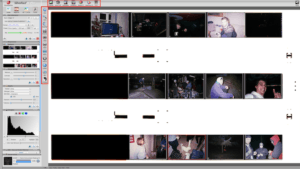
Photoshop or in my case Gimp, will never see the film profile used by the scanner. That profile will be the profile for the output color space, not the film profile. (My advice is to use SRGB unless you have a strong reason to do other wise and you thoroughly understand enough about color management to know what you are doing!) By default no profile is embedded in the output file, but under the Output tab, you can specify that a profile be embedded in the output file. It also uses the output color space profile to determine which RGB values it puts in the output file. Under the Color tab, you set the information about the profile, but you also set the output space. Third, you should understand what vuescan does with the profile.

The general wisdom is that you can't profile color negative film, but Vuescan managed to do it. I even managed to use it to profile my Epson 3200 scanning Portra 160, which is a color negative film. If you do that, it works just as the documentation says it does. Second, you have to read the instructions VERY carefully. That should be pretty clear because vuescan provides you with a grid to use in aligning the image properly. When setting the cropping area in preview, you use the area inside the lines. Make sure the camera and the target are perfectly level and parallel to each other so the image is square on. But i do have some general advice.įirst, you have to use a camera target which you should be very careful to set up when photographing. Since Ken offered to talk you through it, I will let him do it.


 0 kommentar(er)
0 kommentar(er)
